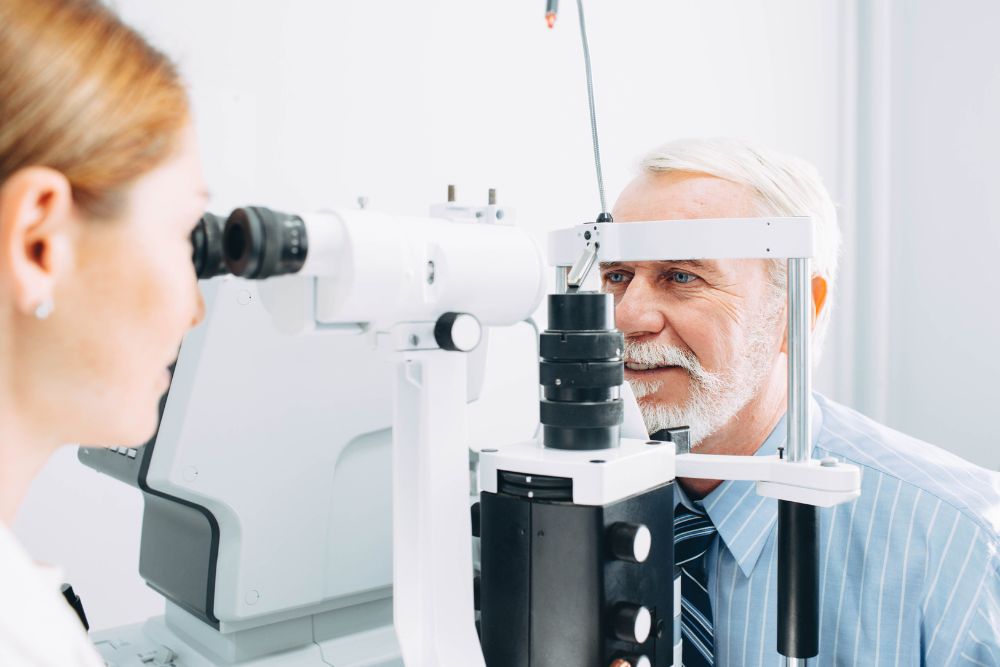A Closer Look at Drusen: Understanding the Impact on Vision

When it comes to vision health, it’s essential to be aware of any signs or symptoms that may affect your eyesight. But some warning signs, such as drusen, can only be detected during an eye exam. But what is drusen, how do you know if you have them, and what’s the link between drusen and age-related macular degeneration (AMD)? In this post, we’ll look closer at how drusen affects your eye health, risk factors, and treatment options.
What Are Drusen?
Drusen are small yellow deposits that build up in the back of the eye and can be seen by your ophthalmologist during a dilated eye exam. They are composed of fat and protein deposits and cellular waste materials found within the layers of the retina. Drusen can be classified into two types:
- Hard drusen – typically smaller with well-defined borders; less likely to cause vision problems
- Soft drusen – larger and spread out with indistinct borders; more likely to impact vision.
Drusen and Age-Related Macular Degeneration
Small drusen can appear in various numbers and sizes, but they are common among people 50 and older. The presence of a small number of drusen does not necessarily indicate an eye condition. However, as drusen accumulates, it may be a sign of age-related macular degeneration (AMD). This is why your retinal specialist looks for drusen during a comprehensive eye exam.
Recognizing Symptoms
Early detection of drusen is crucial for managing AMD and preserving vision. While drusen may not cause noticeable symptoms, it is essential to be aware of potential warning signs of progression to AMD. If you experience any of the following symptoms, it is recommended to consult a retina specialist as soon as possible:
- Blurred or distorted central vision
- Difficulty seeing in low light conditions
- Straight lines appearing wavy or bent
- Dark spots or blind spots in your vision
- A blank or blurry area in your central vision
Risk Factors
It is thought that drusen are formed in response to age-related biochemical changes, however the consensus is still unclear. Risk factors for developing drusen include:
- Age (more common in people aged 50 and older)
- Family history
- Tobacco use
- High blood pressure
- Obesity
- Race (Caucasians have a higher risk of developing drusen)
Treatment Options
Currently, there are no specific treatment options for drusen. However, regular dilated eye exams are essential for monitoring any changes in the size or quantity of drusen and screening for possible AMD progression. Additionally, lifestyle modifications such as maintaining a healthy diet, exercising regularly, and avoiding smoking can help reduce the risk of drusen and AMD progression.
Take Proactive Steps
Understanding drusen, its role in AMD detection, and its impact on vision is crucial for maintaining optimal eye health, particularly if you have one or more risk factors. Recognizing the symptoms, seeking early intervention and regular eye exams can help you protect your eyesight. Remember, early detection and intervention are vital in managing this condition. If you have any concerns or questions, do not hesitate to consult with a retinal specialist. Contact us today at Retinal Group of Florida, to take a proactive step toward preserving your vision.


